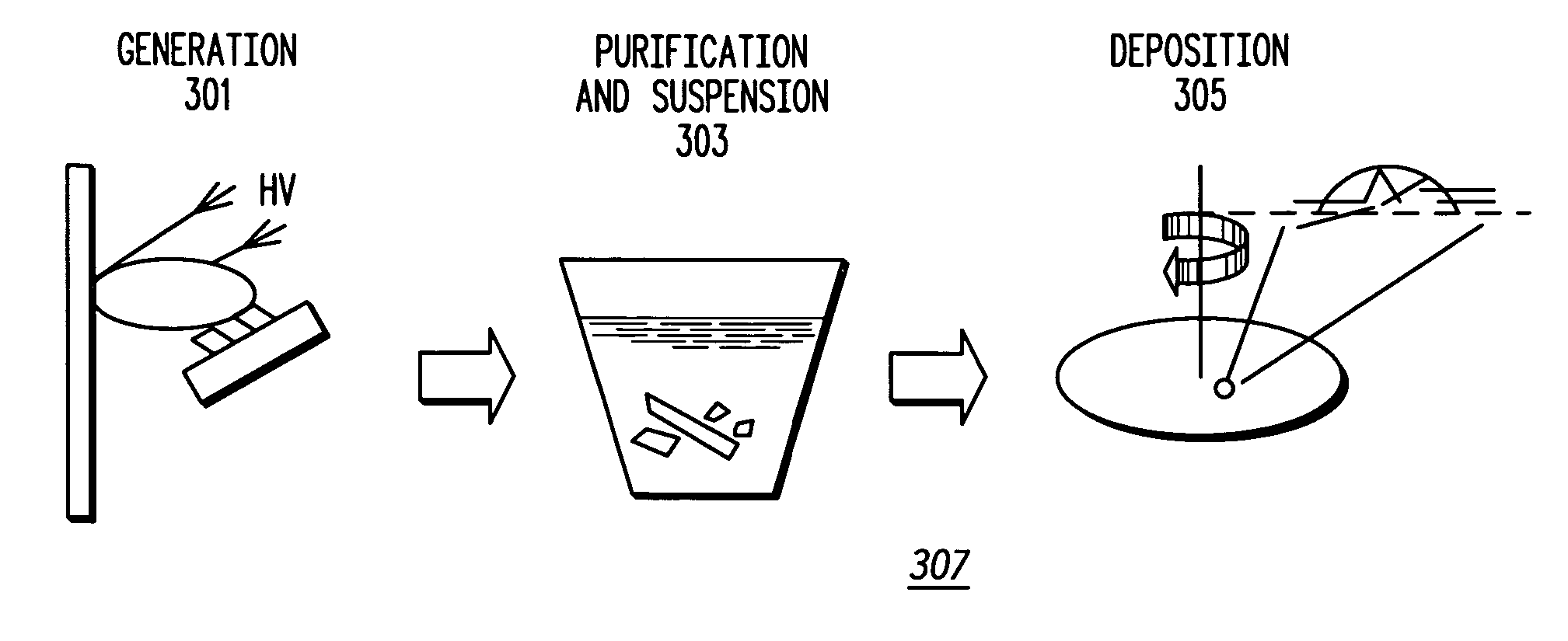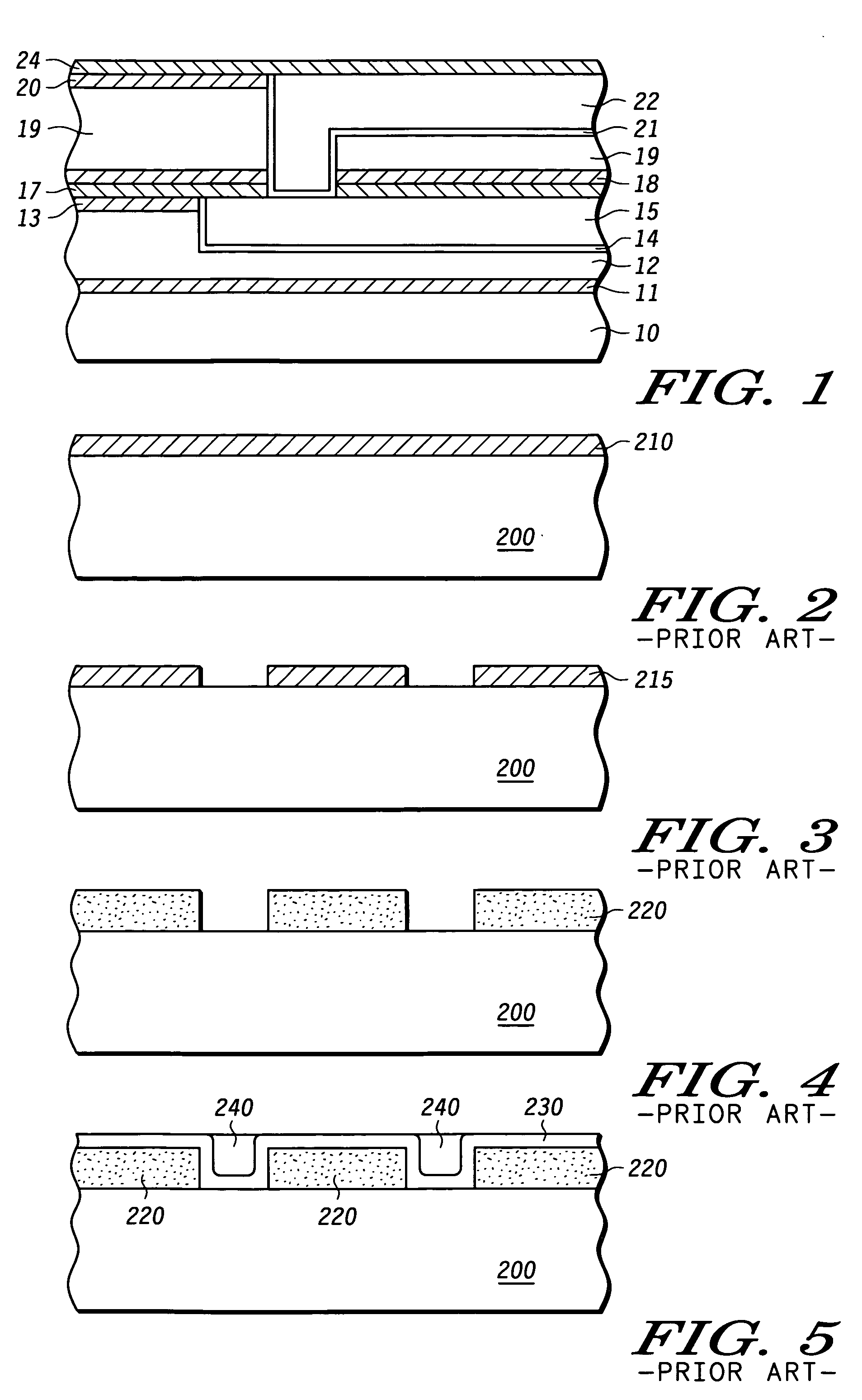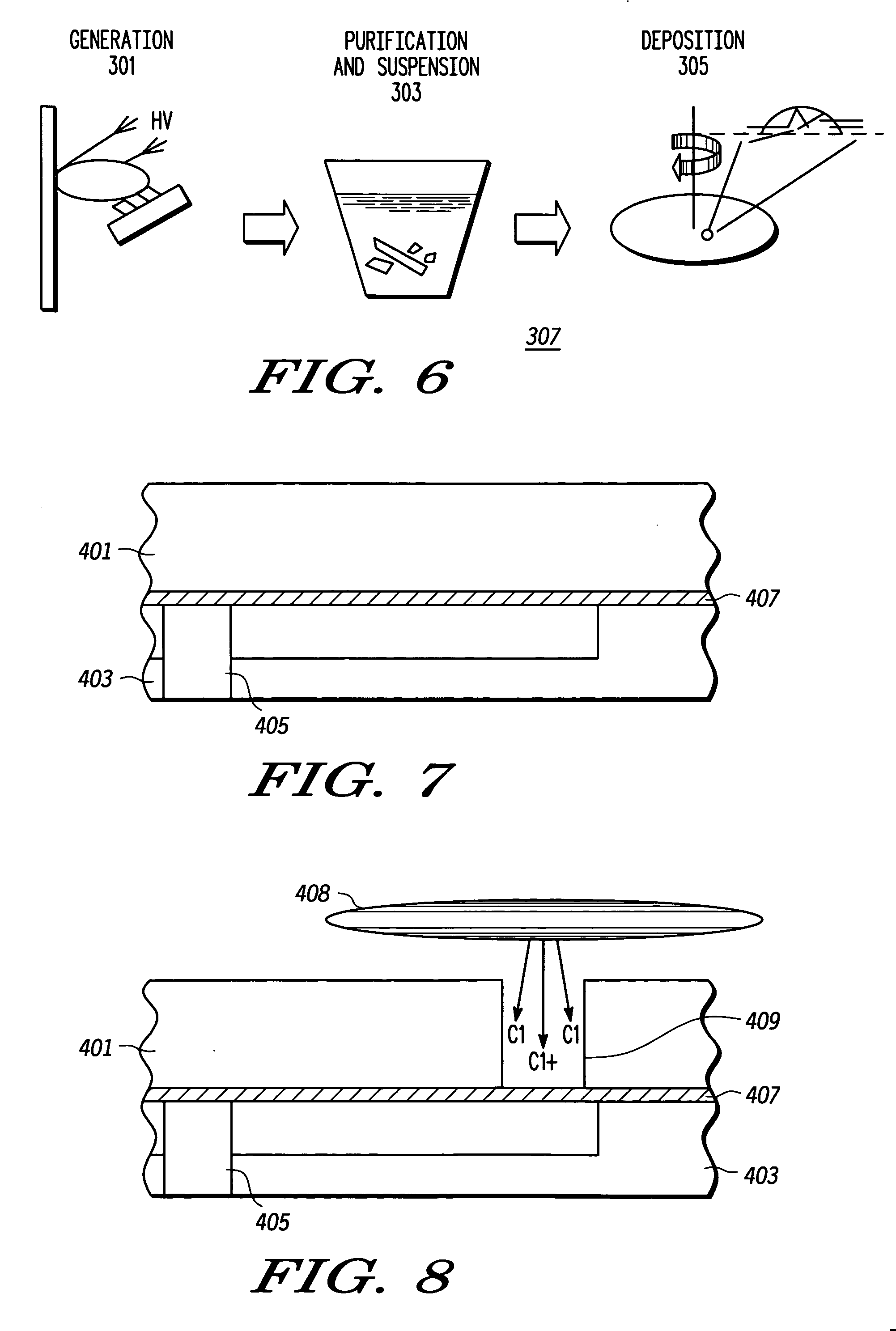Deposition and patterning of boron nitride nanotube ILD
a boron nitride nanotube and patterning technology, applied in the field of semiconductor processing, can solve the problems of most existing dielectric materials, lack of optimal dielectric materials for use in ild, and the need for increased circuit densities and speeds
- Summary
- Abstract
- Description
- Claims
- Application Information
AI Technical Summary
Problems solved by technology
Method used
Image
Examples
Embodiment Construction
[0020] As used herein, the term “nanoparticle” is meant to encompass nanotubes, nanoballs, nanohorns, and other shapes assumed by materials on the nanoscale.
[0021] It has now been found that suspensions of nanoparticles, such as, for example, suspensions of boron-nitride nanotubes (BNNTs) in a liquid medium, can be used to make dielectric layers having low k-values, high structural integrity and excellent mechanical properties. These materials are also conducive to BEOL integration (that is, they are not adversely affected by BEOL etch, metallization and multilayer deposition processes). The use of purified suspensions of BNNTs to make dielectric layers through spin coating or through other evaporative processes is especially preferred, due to the particularly favorable combination of excellent hardness, exceptionally high Young's moduli, and reproducible dielectric constants of 2 or less that these materials and the associated methodology afford.
[0022]FIG. 1 illustrates an interc...
PUM
 Login to View More
Login to View More Abstract
Description
Claims
Application Information
 Login to View More
Login to View More - R&D
- Intellectual Property
- Life Sciences
- Materials
- Tech Scout
- Unparalleled Data Quality
- Higher Quality Content
- 60% Fewer Hallucinations
Browse by: Latest US Patents, China's latest patents, Technical Efficacy Thesaurus, Application Domain, Technology Topic, Popular Technical Reports.
© 2025 PatSnap. All rights reserved.Legal|Privacy policy|Modern Slavery Act Transparency Statement|Sitemap|About US| Contact US: help@patsnap.com



